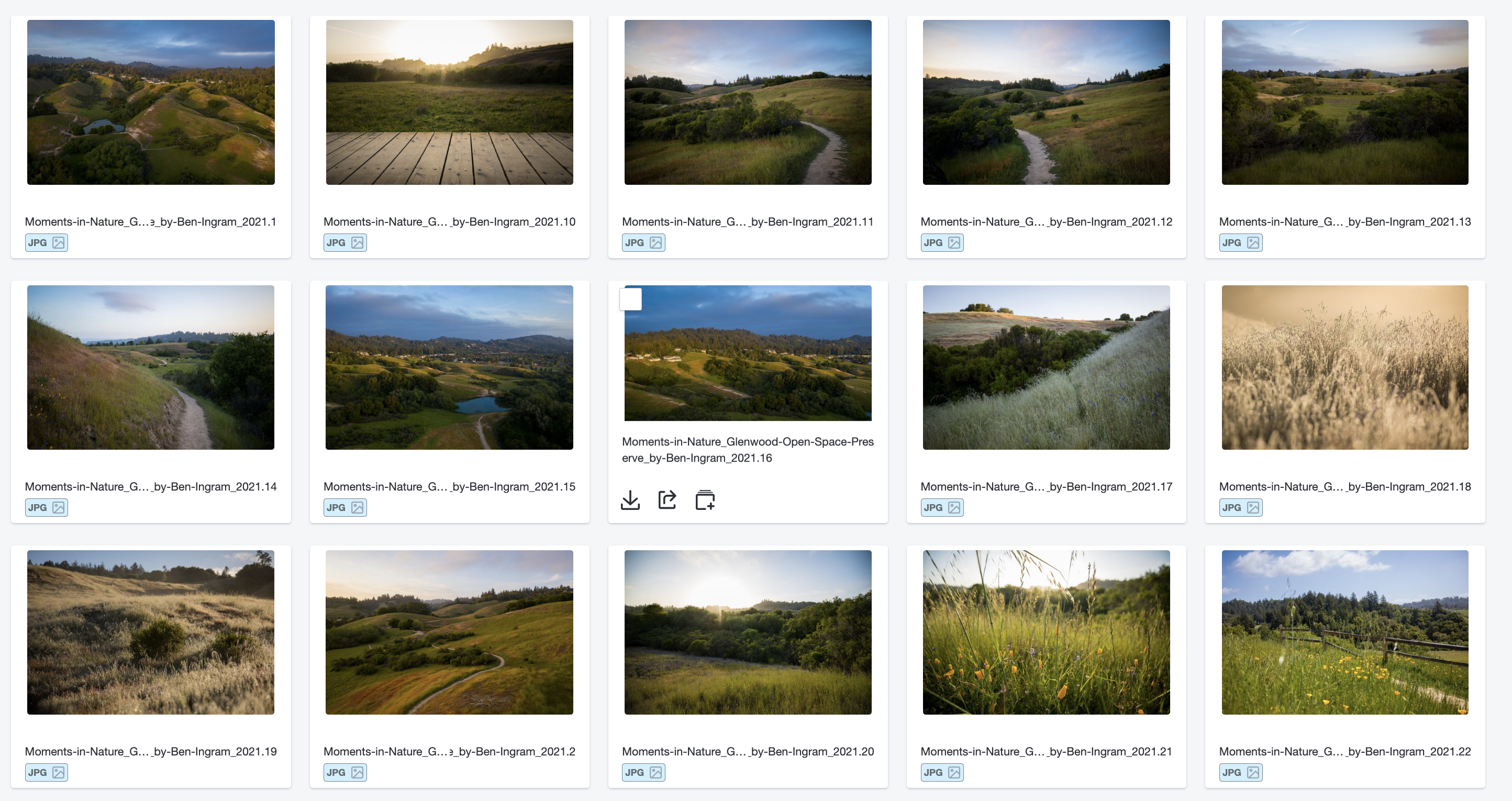Getting Started with Digital Asset Management (DAM): Meeting and Measuring Your Goals


“Does it work?” is a question you should be able to answer about your digital asset management system. If you’re the one responsible for selecting and managing the system you must be able to answer this question. But how? It starts with setting goals and measuring your progress.
Setting goals is a great way to get you on the path to a fully functional Digital Asset Management system; having a vision in sight of what your DAM will achieve is important in implementation and rollout. But working to achieve them is something else entirely! It takes a written plan, diligence, a leader, and user training to make sure you get where you want to go.
In this post we will discuss how to meet your goals, specifically through one all-important method: Governance. We will also talk about some ways in which you can measure your progress to see if you are meeting the goals you have set for yourself.
Meeting Your Goals Through Governance
The key to meeting your DAM goals is through governance. Using governance, you will be able to keep things on track to meet your goals. But what is governance? Governance is a framework put in place to make sure your goals are met now and into the future. A governance plan will outline why you have a DAM, who makes decisions about the DAM, what their roles and duties are, rules around metadata schema and tags, and when the DAM needs to be audited or updated. We will go through each part in more detail.
The DAM Champion
First off, you will need to put someone in charge of your DAM. There are numerous different names for this person: DAM Governor, DAM Manager, or DAM Champion are some of the more common ones. This person is crucial to the success of your DAM. Without someone in charge, the DAM can easily fall by the wayside.
They will most likely be the person who led your DAM implementation, developed metadata standards, who leads training, and answers questions about the DAM. They may also be the primary uploader to the DAM. In optimal cases, this person’s sole job is to run and manage the DAM. We know that most organizations cannot afford to appoint a person like this, so the task is often left to the most active user of the DAM.
Governance Tasks
Implementation
We won’t get into all the details on this, because we could write a book on it, but your DAM Champion should also serve as the implementation leader at your organization. That way they will truly know the ins and outs of how it came together. At some point, you may have someone new coming into this role, so they will not experience implementation, but hopefully there is time for the old DAM Champion to impart their wisdom to the new.
Site Maintenance
Some people set up their DAM once, and then never go back to evaluate it ever again. And while we’re glad that people are using it, uploading, and gaining use, it does need to be checked in on from time to time! If things are never reviewed, the DAM can become a jumble of old folders, duplicate files, and outdated metadata over time.
It’s good to take a look at what’s going on in your DAM at least on a monthly basis, preferably on a weekly basis. Things you will want to check include:
• Are assets going into the right folders?
• Are people uploading the correct metadata?
• Are the branding materials up to date and correct?
• Is your folder structure still working well?
• Do you have enough storage space and bandwidth?
Once or twice a year, you will want to conduct an even deeper system audit. In this deep dive, you will want to:
• Look through all of your folders for out-dated or duplicate files
• Make sure your permissions are optimized
• Remove users who have left the organization
• Make sure you metadata is up to date, and make additions or corrections as needed
User Training
One of the key jobs of governance and the DAM champion is to make sure that all users understand how to use your digital asset management system. First off, they need to make sure that everyone is aware of it! After that, continued training on the following topics is important:
• What they can find in the DAM
• Browsing, search, and refining a search
• Downloading and download options
• Sharing single or groups of assets
• Uploading and metadata input (if they have that capability)
This kind of user engagement is very important for increasing adoption and the success of the DAM. As people learn to integrate the DAM into their everyday workflow, they will see more and more beneficial results over time.
It’s also an important time to gather user feedback. The people on the front lines of using your system and critical at highlighting what works and what does not. Having their feedback taken seriously also makes them true stakeholders in the system who will want to work with you on adoption and success.
The DAM Governance Document
Once you have answers to the questions above, write them down in a single document and keep it on your DAM. This document is important during your implementation to keep you on track, but also as DAM usage grows within your organization. This document can also help new people transition into the role of DAM Champion.
An important piece of the DAM document is information on why you decided to get a digital asset management system to begin with. Record what the issues that you were having were so that you can gauge improvement. Also, include the goals that you intend to meet with your DAM. As discussed in Part One of this series, the major goals for DAM include:
• Brand Consistency
• Uploads and Distribution
• Self-Service
• Centralization
• Reuse
Measuring Your Goals
Once you have your DAM established and your governance plan in place you will, of course, want to know if you are meeting your goals. If you are a small organization with only a few people using the DAM, it’s probably fairly easy to tell if it’s working.
Can you find what you are looking for quickly? Check. Are you able to easily upload and ingest new assets? Check. Share out to clients and colleagues? Check. If your life is made easier by the time DAM, then you have probably met many of the goals that you set.
If you work at a larger organization with hundreds or thousands of users, it may be harder to tell. You may have to dig in deeper, and some measurements need to be benchmarked over time to measure improvement. If you have a boss or higher-ups, you may also need to prove the ROI of the DAM with some concrete numbers. For more on that please check our our blog post on the topic and well as our ROI calculator. If you are the DAM manager, some of the measurements below may be more practical in measuring your goals.
One of the best ways you will know if your DAM is working is by talking to your colleagues! Ask if they understand the new system, all of the functionality, and are able to find and share the files that they need. If you work at a larger organization, you may want to send out a survey, which could be anonymous, to get honest answers about how users are feeling about the DAM. Be prepared to be open to all feedback, both positive and negative. From there you can make changes based upon their answers to improve the system for your end users.
Some other measurements are linked specifically to your goals. Take a look through the list below to see where you stack up on meeting your goals.
Goal: Brand Consistency
• Everything in your DAM is the most up-to-date version.
• People have stopped asking for branding, logos and fonts. They are able to self serve. You can check to see if email requests for this content has gone down.
• All assets on websites, in emails, marketing campaigns and advertisements are the most current.
Goal: Uploads and Distribution
• No longer using non-sanctioned tools like WeTransfer to send files.
• Users are no longer downloading asset and email - they are simply creating sharelinks. Number of sharelinks is a report you should be able to find in you DAM.
Goal: Self-Service
• The number of email requests down - If you have been tracking the number of emails you received regarding assets before and after a DAM was in place, this is a great way to show a success.
• Fewer questions on how and where to find assets.
• An active user base. Check in to see what percentage of your organizations is actively using the DAM.
Goal: Centralization
• All of your brand assets in one centralized location. How many different locations where your assets stored in before? How many now? If it’s just one place or those numbers have dropped, success!
• Time spent searching is down, users can go to one place to find all of the files that they need.
Goal: Reuse
• Use download reports to see how frequently content is being downloaded, by who, and for what.
• Check to see if the amount of photoshoot requests or design has gone down. Hopefully, now that people can find what is already available, they will use them more!
• Assets are not lost, and do not need to be duplicated by numerous people or departments.
After looking into these points above, you will have a much clearer idea if your DAM is succeeding. If you find certain areas lacking, the best solution is to talk to your users. Try to understand their needs and viewpoints, and see what you can do to improve their experience. User trainings are also essential to adoption and use, so be sure to offer this to all new employees and anyone who needs a refresher.
If you are meeting all your goals, congratulations! But keep in mind that user needs change over time, workflows change, and the DAM needs regular maintenance to stay functional. Success now doesn’t guarantee success later, so make sure you regularly check back in with you Governance Document and your users to make sure your DAM goals continue to be met.



